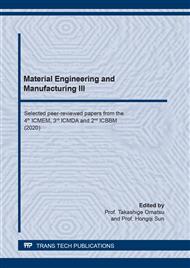p.54
p.63
p.69
p.75
p.83
p.89
p.95
p.101
p.107
Hydrogen Adsorption Phenomena Simulation of ZSM-5 Zeolite Using Molecular Dynamics Method
Abstract:
Hydrogen energy has great potential to become one of the clean energies of the future. The current use of hydrogen gas as an energy source still has problems, namely in the distribution and storage system. One solution to overcome these problems is to use the adsorption method. Zeolite material is considered to be a good material to be used as a storage medium for hydrogen gas. Experimental research generally still requires a fairly high cost. Therefore, we need another method that can support it. In this research, the author used the Molecular Dynamics Simulation method. The variation of temperature used in this simulation is 77, 100, 150, 195, 273, and 293 K with a variation of pressure at each temperature is 1, 2, 4, 6, 8, and 10 bar. Our simulation results are then compared with the results of experimental research conducted by other researchers. At low pressure and high temperature, the results of our simulation are close to the results of experimental research. But at high pressure and low temperature, the results of our simulation are significantly different from the results of experimental research.
Info:
Periodical:
Pages:
83-88
Citation:
Online since:
August 2020
Authors:
Price:
Сopyright:
© 2020 Trans Tech Publications Ltd. All Rights Reserved
Share:
Citation:


